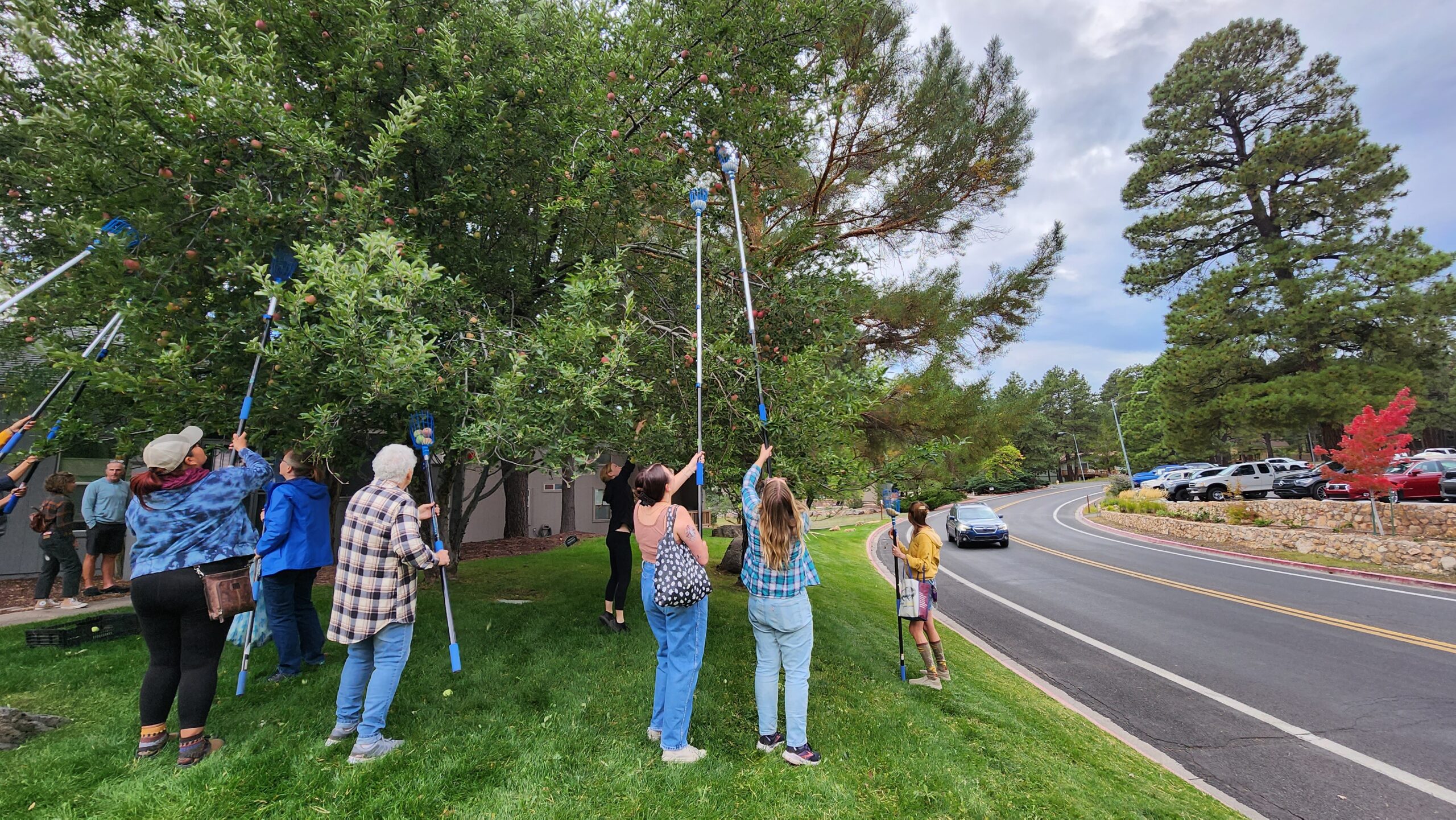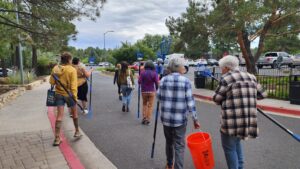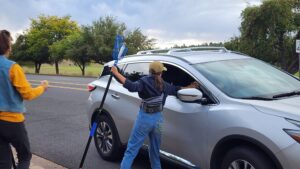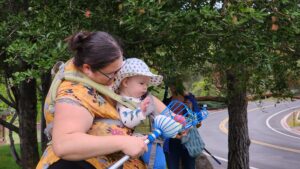
Darrien Benally

Darrien Benally
On a warm summer evening, a gentle breeze blows through the Continental Golf Club neighborhood in Flagstaff, Arizona. Volunteer community members gathered to pick ripe apples from nearby fruit trees. Many apples have already littered the ground, too bruised for human consumption and attractive to pests. This is where Flagstaff Foodlink enters the picture to help curb food waste and combat food insecurity in the community.
The United States is one of the biggest producers of food waste in the world. Approximately a third of food intended for human consumption is wasted. Rather than contributing to this issue, Flagstaff Foodlink, a non-profit organization supporting local food systems, devised a local solution. For the past three years, the organization has hosted the Flagstaff Fruit Tree Project to combat fruit waste in the area.


“We’ve got a lot of free food in the community. Essentially we wanted to make use of it,” says Summer White, Board Member for Flagstaff Foodlink. This is where fruit gleaning comes in. Fruit gleaning is a process that makes use of non-sellable produce. Such produce may have defects such as bugs or bruises but is otherwise edible. Food that is determined a waste can be used for preserving or composting instead of heading to the landfill.
The fruit-gleaning process is adapted for Flagstaff community members; instead of picking through farm fields, residential trees are scouted for fruit. Meanwhile, homeowners in Flagstaff offer their fruit trees for the volunteers to pick.
“Flagstaff is not seen as a fruit mecca… [but] there’s apples, plums, apricots and peaches,” White said. This variety of locally grown fruits could be a significant source of nutrition for residents of Flagstaff, many of whom lack reliable access to fresh produce.
According to a 2021 Coconino County needs assessment, 14.5% of residents in the county experience food insecurity and 69% of respondents reported a lack of access to nutritious food due to costs. Flagstaff is the largest city in the county, with many traveling to purchase food and other essentials in the community.
Flagstaff is also home to Northern Arizona University where a portion of the student community is in need of affordable food options. “For a college student… it’s super difficult to find options that are healthy and green that aren’t contributing to anything harmful to the planet. So it’s really nice to get free apples,” Northern Arizona University student Helen F. said. It is estimated that 35% of undergraduates across the country are experiencing food insecurity.

Locally grown foods can impact greenhouse gas emissions by reducing the distance the food needs to travel to reach consumers. This is an opportunity for fruit-picking volunteers to take action against climate change. Further, collecting locally grown foods reduces the need for large areas of land for agriculture.
Once established, fruit trees require minimal care because of their large root system. Many fruit trees are considered established in between two to seven years, from which point they can rely on seasonal precipitation, reducing the need for allocating drinking water resources to produce the fruit.
Flagstaff Foodlink helps make the fruit-gleaning process accessible for almost everyone by providing a nifty fruit picker tool to volunteers. The organization has a check-out system where volunteers can borrow the tool at their liking. The tool is slender with a long handle that can extend to reach higher fruits and a basket to catch the fruit. The basket has finger-like prongs that help remove the fruit from the tree.
“It’s my first time and it’s super fun, I’m excited that my baby can experience it too,” Tina Gustafan of Elevated Gardening said. Thanks to the tool’s easy-to-use design, older folks can get involved as well, engaging members of the entire community.

Currently, the fruit-gleaning event is held annually by Flagstaff Foodlink. However the organization would like to see the community take more ownership of the event. The dream is that individuals within the community can be proactive in organizing the future fruit-gleaning days without the Flagstaff Foodlink needing to be so involved.
The process is straightforward and easily replicated. The first step is to find tree donors, those willing to share the fruit from their trees. Next, gather some gleaning tools and recruit volunteers to pick the fruit. All that’s left is a strong community and the drive to divert food waste and combat climate change.